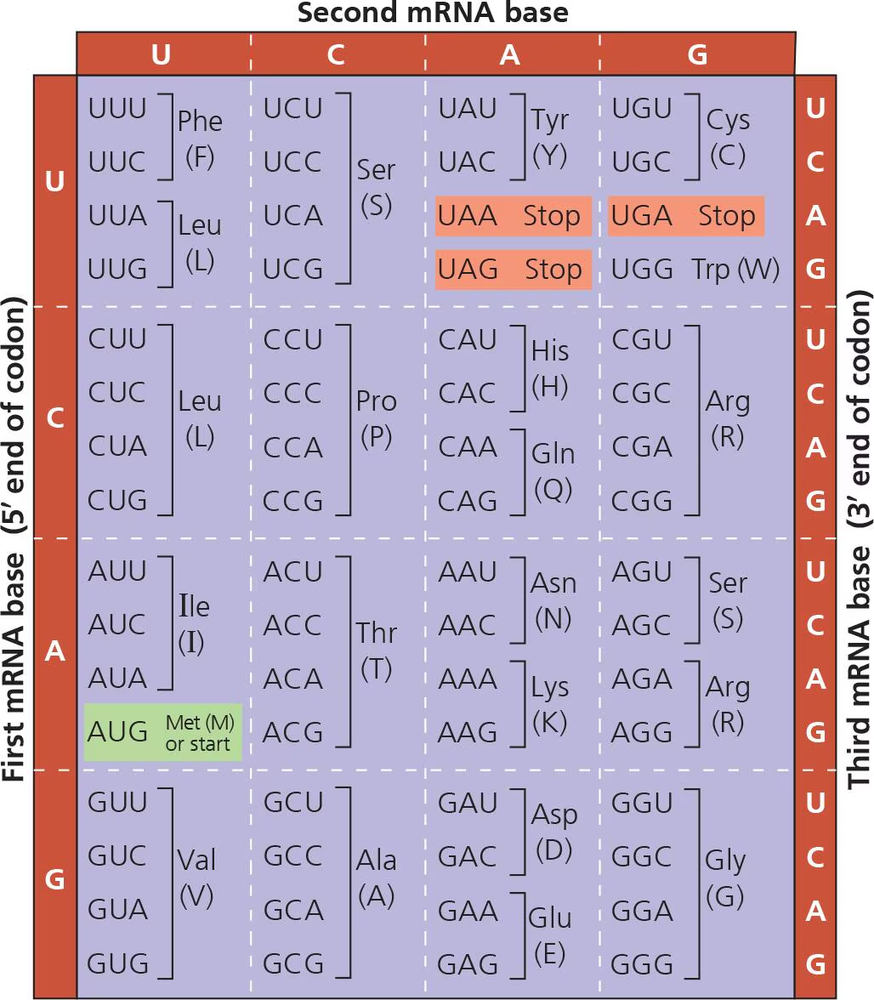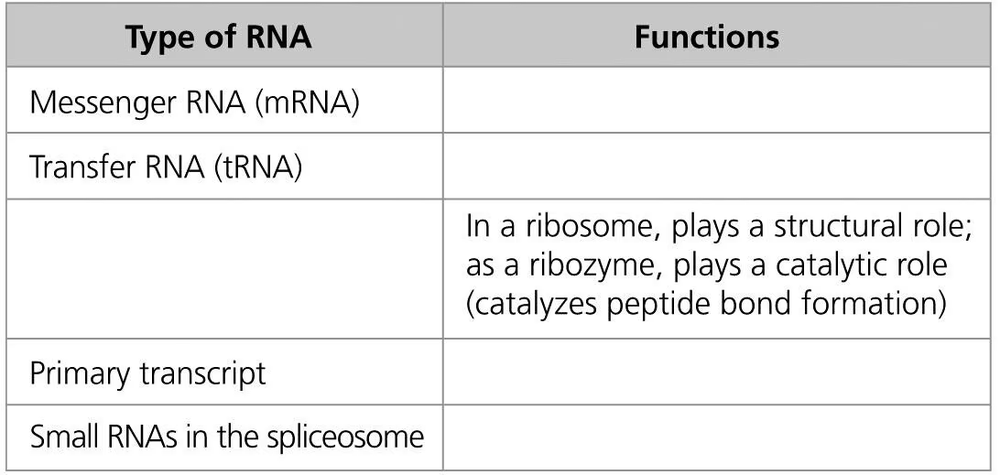 Back
BackProblem 1
In eukaryotic cells, transcription cannot begin until
a. The two DNA strands have completely separated and exposed the promoter.
b. Several transcription factors have bound to the promoter.
c. The 5′ caps are removed from the mRNA.
d. The DNA introns are removed from the template.
Problem 2
Which of the following is not true of a codon?
a. It may code for the same amino acid as another codon.
b. It never codes for more than one amino acid.
c. It extends from one end of a tRNA molecule.
d. It is the basic unit of the genetic code.
Problem 3
The anticodon of a particular tRNA molecule is
a. Complementary to the corresponding mRNA codon
b. Complementary to the corresponding triplet in rRNA
c. The part of tRNA that bonds to a specific amino acid
d. Catalytic, making the tRNA a ribozyme
Problem 4
Which of the following is not true of RNA processing?
a. Exons are cut out before mRNA leaves the nucleus.
b. Nucleotides may be added at both ends of the RNA.
c. Ribozymes may function in RNA splicing.
d. RNA splicing can be catalyzed by spliceosomes.
Problem 5
Which component is not directly involved in translation?
a. GTP
b. DNA
c. tRNA
d. ribosomes
Problem 6
Using Figure 17.6, identify a 5′→3′ sequence of nucleotides in the DNA template strand for an mRNA coding for the polypeptide sequence Phe-Pro-Lys.
a. 5′-UUUCCCAAA-3′
b. 5′-GAACCCCTT-3′
c. 5′-CTTCGGGAA-3′
d. 5′-AAACCCUUU-3′
Problem 7
Which of the following mutations would be most likely to have a harmful effect on an organism?
a. A deletion of three nucleotides near the middle of a gene
b. A single nucleotide deletion in the middle of an intron
c. A single nucleotide deletion near the end of the coding sequence
d. A single nucleotide insertion downstream of, and close to, the start of the coding sequence
Problem 8
Would the coupling of the processes shown in Figure 17.24 be found in a eukaryotic cell? Explain why or why not.
<IMAGE>
Problem 9
Complete the following table:


